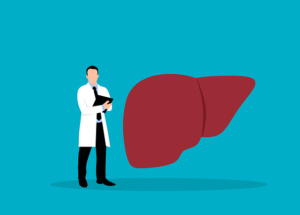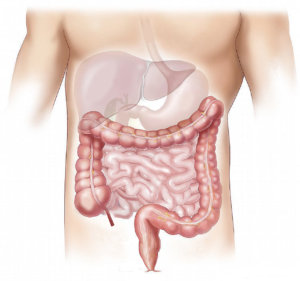## Introduction to chronic migraine and the limitations of medication
Chronic migraine is a debilitating condition that affects millions of people worldwide. It is characterized by recurring headaches that can last for hours or even days. While medication has long been the go-to treatment for migraine sufferers, it often comes with limitations. Many medications only provide temporary relief and can cause unwanted side effects. This has led to a growing interest in alternative treatments for chronic migraine.
Understanding alternative treatments for chronic migraine
Alternative treatments for chronic migraine encompass a wide range of therapies and approaches that aim to address the root causes of the condition. These treatments often take a holistic approach, considering not only the physical symptoms but also the emotional and psychological aspects of migraine. They can include lifestyle changes, dietary modifications, relaxation techniques, and various complementary therapies.
The latest advancements in alternative treatments for chronic migraine
In recent years, there have been significant advancements in alternative treatments for chronic migraine. One notable development is the emergence of novel medications specifically designed for migraine prevention. These include ubrogepant and erenumab, which have shown promising results in clinical trials. These medications target the underlying mechanisms of migraine and can help reduce the frequency and severity of attacks.
Another exciting advancement in alternative treatments is the use of neuromodulation devices. These devices deliver targeted electrical stimulation to specific nerves or brain regions to alleviate migraine symptoms. They can be used as both preventive and acute treatments, providing a non-pharmacological option for migraine sufferers.
Exploring non-pharmacological treatments for chronic migraine
Non-pharmacological treatments have gained traction in the management of chronic migraine due to their non-invasive nature and lack of side effects. These treatments focus on lifestyle modifications and behavioral interventions that can help reduce the frequency and intensity of migraine attacks.
One such treatment is cognitive behavioral therapy (CBT), which aims to identify and change negative thought patterns and behaviors that contribute to migraine. CBT has been shown to be effective in reducing migraine frequency and improving quality of life for chronic migraine sufferers.
Another non-pharmacological approach is biofeedback therapy, which uses electronic sensors to monitor and provide feedback on physiological processes such as muscle tension and heart rate. By learning to control these processes, individuals can gain better control over their migraine symptoms.
Alternative treatments for specific types of chronic migraine
While chronic migraine is a broad term that encompasses various subtypes, it is important to note that different types of chronic migraine may require different treatment approaches. For example, vestibular migraine, which is characterized by dizziness and balance problems, may benefit from treatments that specifically target the vestibular system, such as vestibular rehabilitation therapy.
Similarly, ocular migraine, which is characterized by visual disturbances, may benefit from treatments that focus on eye health and vision correction. This can include wearing tinted glasses or using vision therapy exercises to strengthen eye muscles.
Over-the-counter (OTC) options for migraine relief
For individuals seeking immediate relief from acute migraine attacks, over-the-counter (OTC) options can be a convenient and accessible solution. These include medications such as ibuprofen, acetaminophen, and aspirin, which can help alleviate pain and reduce inflammation associated with migraines.
It is important to note that OTC medications should be used judiciously and under the guidance of a healthcare professional. They may not be suitable for everyone, and prolonged or excessive use can lead to medication overuse headaches.
Urgent care options for acute migraine attacks
In cases where over-the-counter options are not sufficient to relieve the symptoms of an acute migraine attack, urgent care options can provide more specialized care. Urgent care centers often have dedicated headache clinics where healthcare professionals can administer medications such as triptans, which are specifically designed to target migraines.
These clinics may also offer other interventions such as intravenous fluids, anti-nausea medications, and oxygen therapy, which can provide fast and effective relief for acute migraine attacks.
Promising new treatments for chronic migraine in 2022
The field of migraine research is constantly evolving, and 2022 holds promise for several new treatments. One such treatment is aooe treatments, which target specific receptors in the brain associated with migraine. Early clinical trials have shown positive results, and researchers are hopeful that this treatment will offer a new avenue for migraine prevention and management.
Additionally, ongoing research into the benefits of alternative therapies such as acupuncture, herbal supplements, and mind-body practices like yoga and meditation continue to expand our understanding of their potential effectiveness in managing chronic migraine.
The future of migraine treatments: What to expect in the coming years
Looking ahead, the future of migraine treatments is filled with exciting possibilities. Advances in genetics and personalized medicine may soon allow for tailored treatments that address the unique underlying causes of each individual’s migraines. The development of targeted therapies based on specific genetic markers could revolutionize the field and provide more effective and precise treatments.
Furthermore, advancements in neurostimulation techniques, such as transcranial magnetic stimulation (TMS) and deep brain stimulation (DBS), hold promise for individuals with severe and treatment-resistant chronic migraine. These techniques involve the use of electromagnetic fields or implanted devices to modulate brain activity and reduce migraine symptoms.
Conclusion: Embracing a holistic approach to managing chronic migraine
As our understanding of chronic migraine continues to evolve, it is clear that a holistic approach to treatment is essential. Alternative treatments offer a diverse range of options that can complement or even replace traditional medication-based approaches. By embracing a holistic approach that considers lifestyle modifications, behavioral interventions, and emerging therapies, individuals with chronic migraine can find relief and regain control over their lives.
CTA: If you or a loved one suffer from chronic migraine, consider exploring alternative treatments and discussing them with a healthcare professional. With the latest advancements in alternative therapies, relief may be closer than you think.




